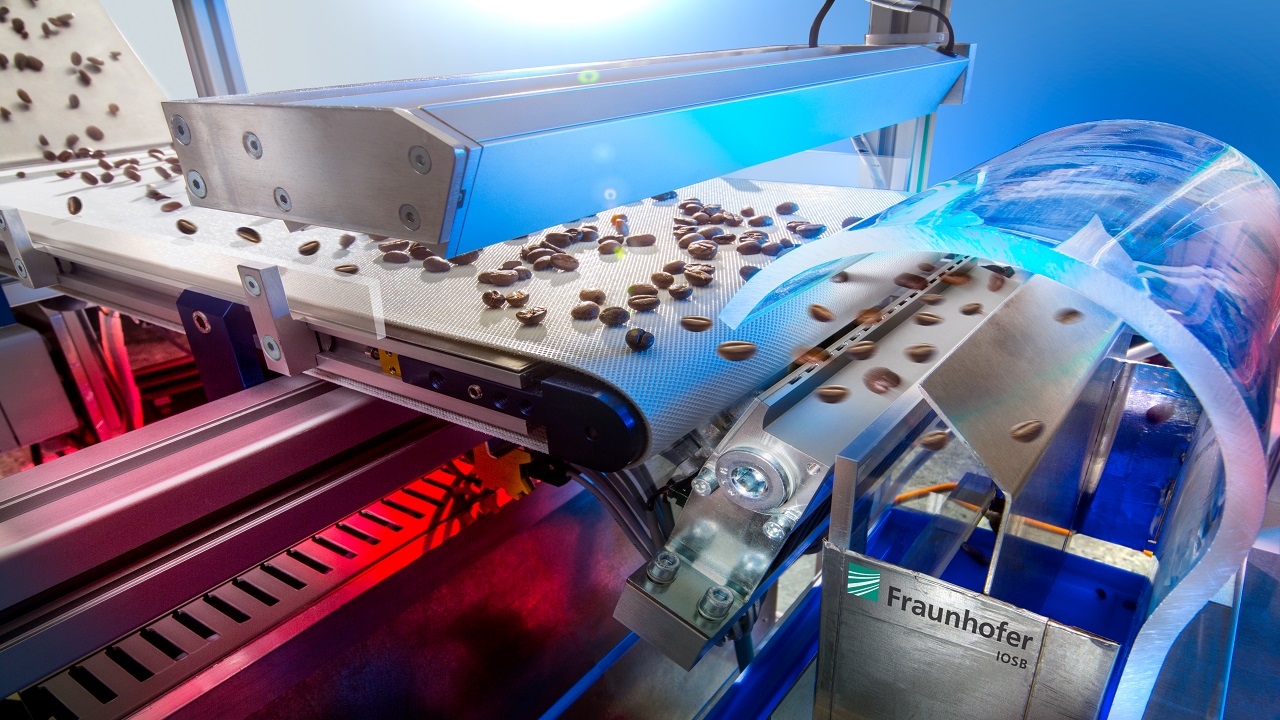We are a member of the Food Chain Management Alliance (FCM), which is a platform for collecting the latest findings in science to ensure food quality and traceability.
Food is checked and sorted during production. The use of spectral information beyond R-G-B facilitates classification. Many products show differences in the ultraviolet and infrared wavelength range that are not detectable in the visible wavelength range. The IOSB has a spectral workbench for hyper spectral imaging recordings from 240 nm to 2500 nm.
Just as we expect food at the supermarket to be cheap, we also assume that the offered food meets the highest quality standards. This is possible only because food is produced according to industrial standards. As the demands on products continue to rise, the demands for product testing and inspecting and the often necessary sorting are on the rise as well.
Food is checked and sorted at various points of the process chain: seeds after the harvest, grapes when delivered to the winegrowers' cooperative, coffee as green and roasted beans, dried mushrooms before packaging and, and, and...
In addition to established R-G-B camera technology and laser scanning, other camera testing techniques operating in the ultraviolet or infrared wavelength range are increasingly used to inspect food. The cause for this are problems that can no longer be solved with sensor technology working in the visible wavelength range, or can only be solved with more time consuming operations.
Many products show differences in the ultraviolet and infrared wavelength range that are not detectable in the visible wavelength range. Biochemical methods have been used for many years in the mid-infrared wavelength range to optically check, identify, and differentiate between organic substances. These established procedures show very subtle results but they are also very time consuming and therefore usually not suitable for quality testing in production. Differences between characteristics are often not as clearly defined in the near-infrared range as in the mid-infrared wavelength range but this range frequently provides the opportunity to use different types of selection or assessment characteristics or criteria. The available technology is usually more expensive than the one for visible wavelengths, but fast enough for tests in real time and their results are often comprised of astonishingly robust and distinguishable characteristics. The evaluation results can thus be used directly in the process, for example, during sorting.
The IOSB has a multispectral workbench that makes it possible to examine objects in minute detail across the entire wavelength range, from ultraviolet (UV) to the visible (VIS) range, to near infrared (NIR). The workbench consists of three different but similarly constructed systems, so-called hyper-spectral imaging systems, used for the UV, VIS, and NIR wavelength range. From 240 nm to 2500 nm, analysis technology is available for preliminary examinations. A spectral database is established at IOSB for different foods and their critical foreign objects or substances.
We are a member of the Fraunhofer Alliance Food Industry, where the latest scientific findings for ensuring food quality and traceability come together.
 Fraunhofer Institute of Optronics, System Technologies and Image Exploitation IOSB
Fraunhofer Institute of Optronics, System Technologies and Image Exploitation IOSB 